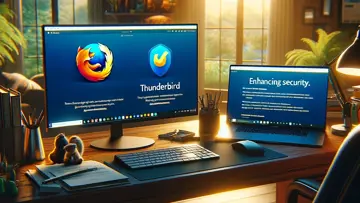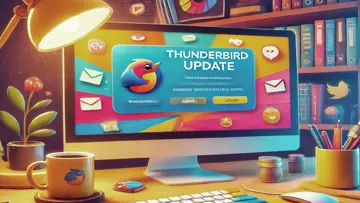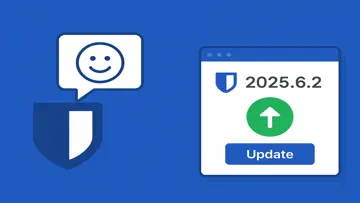Revolutionizing 3D Modeling with GDML
Geometry Description Markup Language (GDML) by Imipak offers an intuitive XML-based system that enhances the creation and sharing of complex geometric data effortlessly.
Overview of Geometry Description Markup Language (GDML) by imipak
The Geometry Description Markup Language (GDML) is a sophisticated software application developed by imipak. It is designed for the representation and manipulation of complex geometrical structures often required in various fields such as computer graphics, scientific computing, and architectural design. The application effectively bridges the gap between human-readable notation and machine-understandable formats, thus facilitating improved communication among various systems and users.
Key Features
- XML-based Structure: GDML employs an XML-based schema, allowing users to create comprehensive and flexible descriptions of geometrical entities.
- Compatibility: The language is compatible with several existing CAD systems and can integrate seamlessly into different workflows.
- Extensibility: Users can easily extend the functionalities of GDML according to their specific requirements. This feature is particularly beneficial for developers looking to customize their geometrical representations.
- Data Representation: GDML supports a wide range of data types and structures, enabling the representation of complex geometrical shapes and their attributes.
- Validation Tools: The software includes tools for validating GDML documents, ensuring accuracy and consistency in the representation of geometrical data.
- User-Friendly Interface: The application features a well-designed graphical user interface (GUI), making it accessible even for users with limited technical knowledge.
Applications in Various Sectors
The versatility of GDML makes it applicable in various sectors:
- Architectural Design: Architects can use GDML to draft detailed geometric representations of buildings, integrating them into bigger architectural frameworks.
- Computer Graphics: The gaming and animation industry benefits from GDML’s ability to model complex geometrical figures, allowing for realistic designs and environments.
- Scientific Research: Researchers utilizing simulations can employ GDML to represent physical phenomena through accurate geometric descriptions, enhancing the quality of data analysis.
- Engineering Projects: Engineers leverage GDML in product design, enabling them to represent structural components accurately for testing and simulation purposes.
User Experience
The user experience provided by GDML is one of its strongest points. The straightforward GUI allows both professionals and newcomers to navigate through its functions with ease. Users can create complex geometrical definitions without extensive training. Additionally, comprehensive documentation and support resources are available, assisting users in efficiently utilizing the software's capabilities.
Integration with Other Tools
GDML is designed for interoperability with numerous software applications. It can export and import various file types widely used across industries, ensuring that users can incorporate GDML into their existing pipelines without disruption. This feature greatly enhances productivity as users can transition between different applications while maintaining their geometrical data integrity.
Performance Analysis
The performance metrics of GDML highlight its capability to handle large datasets that are typical in geometry representation tasks. The efficient parsing engine enables rapid processing of complex geometrical descriptions, resulting in minimal lag during operations. Benchmark tests have shown that it performs consistently under stress, making it a reliable choice for high-demand applications.
Community and Support
The support system surrounding GDML is robust, with a dedicated community forum where users can exchange ideas, share tips, and troubleshoot issues collaboratively. Regular updates from imipak ensure that the software stays current with evolving technological standards and user feedback. Additionally, the availability of technical support services allows organizations to resolve specific challenges quickly.
Cost Consideration
The pricing strategy for GDML is competitive when compared to other geometrical markup languages available on the market. Users have options ranging from one-time purchase licenses to subscription models, making it adaptable for individual users as well as organizations of different sizes. Indirect costs related to training might be lower due to the intuitive design of the software, enhancing its overall value proposition.
The Geometry Description Markup Language by imipak stands out as a versatile tool for professionals requiring efficient geometric representation solutions. Its blend of extensibility, user-friendliness, integration capabilities, and strong performance makes it an essential asset for a variety of industries engaged in complex geometric tasks.
Overview
Geometry Description Markup Language is a Open Source software in the category Development developed by imipak.
The latest version of Geometry Description Markup Language is currently unknown. It was initially added to our database on 10/16/2009.
Geometry Description Markup Language runs on the following operating systems: Windows.
Geometry Description Markup Language has not been rated by our users yet.
Pros
- Provides a clear and standardized way to describe geometric shapes and forms.
- Supports complex 3D geometry, making it suitable for various applications in engineering and design.
- Facilitates seamless communication between software applications that process geometry data.
- Open-source and flexible, allowing users to modify and extend the language as needed.
- Rich metadata support enables detailed descriptions of geometric properties.
Cons
- Limited adoption in mainstream software tools may reduce interoperability.
- Steeper learning curve for users not familiar with markup languages or geometric modeling.
- May lack extensive documentation or community support compared to more widely-used formats.
- Complexity increases with intricate geometry, potentially overwhelming new users.
- Performance issues might arise with extremely large or detailed geometric datasets.
FAQ
What is Geometry Description Markup Language (GDML)?
GDML is a specialized XML-based language for describing geometrical layouts of detectors in High Energy Physics experiments.
Who developed GDML?
GDML was developed by the Geant4 collaboration and is maintained by CERN.
What is the main purpose of using GDML?
The main purpose of GDML is to provide a flexible and comprehensive way to describe complex detector geometries for Monte Carlo simulations in High Energy Physics.
How is GDML different from other geometry description languages?
GDML offers advanced features such as hierarchical volume definitions, parametrization, and tracking sensitive materials that make it suitable for modeling complex detector structures.
Can GDML be used outside of High Energy Physics?
While GDML was originally designed for HEP applications, it can also be used in other fields where detailed geometric descriptions are required, such as medical imaging and space science.
Is GDML an open-source language?
Yes, GDML is open-source and freely available for use under the Geant4 software license.
What tools support GDML?
Several simulation packages, such as Geant4 and FLUKA, provide support for reading and interpreting GDML geometry descriptions.
Is GDML suitable for visualizing detector geometries?
Yes, GDML can be used to generate 3D visualizations of detector layouts for analysis and debugging purposes.
Are there any limitations to the complexity of geometries that can be described in GDML?
While GDML is powerful for most applications, extremely large or highly detailed geometries may pose challenges in terms of computational resources and file size.
Is GDML widely adopted in the scientific community?
Yes, GDML has gained widespread adoption in the High Energy Physics community and is considered a standard for describing detector geometries in Monte Carlo simulations.

Elena Angelini
I'm Elena, your go-to software reviewer at UpdateStar and tech enthusiast. Whether you're a user seeking the latest software titles or software news I've got you covered. When I'm not diving into the latest software, you can find me exploring nature trails, camping under the stars, or competing in online multiplayer games. My reviews are designed to be fun, engaging, and packed with all the details you need to make informed decisions.
Latest Reviews by Elena Angelini
Latest Reviews
|
SoundBoy
SoundBoy by Midilatin: A Unique MIDI Pack for Latin-Inspired Music Production |
|
|
|
R-Studio Technician
R-Studio Technician Offers Comprehensive Data Recovery Solutions for Professionals |
|
Subtitle Workshop 6.0e versión 6.0e
Subtitle Workshop 6.0e: A Veteran Subtitle Editing Tool with Mixed Reviews |
|
|
Outbyte LhSvc Service
Limited Information on Outbyte LhSvc Service Availability |
|
|
Nithonat (32bit)
D16 Group's Nithonat (32bit): A Vintage Drum Synthesizer with a Rich Sonic Palette |
|
|
SOLIDWORKS Login Manager
SOLIDWORKS Login Manager Review: Secure and Efficient CAD Access |
|
|
UpdateStar Premium Edition
Keeping Your Software Updated Has Never Been Easier with UpdateStar Premium Edition! |
|
|
Microsoft Edge
A New Standard in Web Browsing |
|
|
Google Chrome
Fast and Versatile Web Browser |
|
|
Microsoft Visual C++ 2015 Redistributable Package
Boost your system performance with Microsoft Visual C++ 2015 Redistributable Package! |
|
|
Microsoft Visual C++ 2010 Redistributable
Essential Component for Running Visual C++ Applications |
|
|
Microsoft OneDrive
Streamline Your File Management with Microsoft OneDrive |





